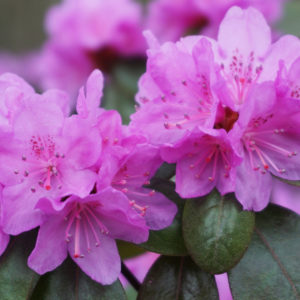In Massachusetts Arbor Day is celebrated on the last Friday in April and by calling on the state’s residents to plant a tree it aims to remind us all of the importance of trees in our environment. Arbor Day and the Foundation that sponsors this event had its beginnings back in 1872 when Nebraska City resident, J. Sterling Morton, proposed to Nebraska’s Board of Agriculture that they should have a tree planting day. He advocated for the benefits of planting trees with respect not only to their beauty, but also to their role in controlling soil erosion and providing shade. The State of Nebraska took up his request, offering prizes for the most trees planted, and it was estimated that more than one million trees were planted on April 10th that year.
In 1874 Arbor Day became an official event, and in 1885 it became a legal state holiday in Nebraska with its date set as April 22nd. Other states soon adopted the event and by 1920 it was marked in 45 states and territories. It is now a tradition in all 50 states and since 1982 has been a feature in schools, with small saplings being given to students to plant at home. While many states celebrate Arbor Day in April, there are some that celebrate as early as January or as late as May depending on the best planting conditions for their geographic location.
Massachusetts is the fifteenth most forested state in the U.S. with eastern white pine being the most predominant tree, followed by red maple, northern red oak, eastern hemlock and black oak. The state tree is actually the American elm and was chosen as such in 1941 in commemoration of the elm on Cambridge Common under which George Washington took control of the Continental Army in 1775. Until the devastating effects of Dutch elm disease American elms were common shade trees used to line streets as their canopies would offer good shade as well as clearance for traffic passing underneath. Fortunately, disease resistant varieties of elm have since been developed but streets lined with elms are no longer a common sight.
Today the Arbor Day Foundation not only promotes the value of trees on Arbor Day, but works on reforestation projects in response to sevents such as wildfires as well as encouraging community involvement in planting trees. In addition to their education program for schools, they also run the Tree City USA scheme whereby cities, towns and communities that commit to certain levels of tree planting and maintenance annually earn the right to be known as Tree Cities. Started in 1976 with just 42 communities, as of 2021 there were 3,652 Tree Cities throughout the United States ranging in size from New York City with its population approaching 9 million to tiny Sibley ND with just 20 residents. In Massachusetts there are 86 Tree Cities, with Wellesley being the oldest having been recognized as such since 1982.
The benefits of trees are many and for several reasons, whether natural or man-made, there are parts of this country and the world where their losses are great. Organizations such as the Arbor Day Foundation work at all levels to increase the number of trees growing, and it lists these benefits for planting more trees in our communities:
-
-Trees help absorb the sounds of traffic in urban areas by 40%.
-
-Neighborhoods with trees are seven to nine degrees cooler than those without.
-
-Trees reduce energy costs up to 25% by shading buildings and protecting them from winter winds.
-
-Homes with trees have higher property values.
-
-Green space plays a major role in improving mental and physical health.
Planting and maintaining trees absorbs carbon dioxide in the atmosphere, mitigating the effects of climate change. So if you have a mind to plant a tree or two this year, or your child comes home from school with a small sapling to plant you can feel encouraged that your efforts, however large or small, are a vital part of maintaining the health and beauty of our environment.
Sources:








